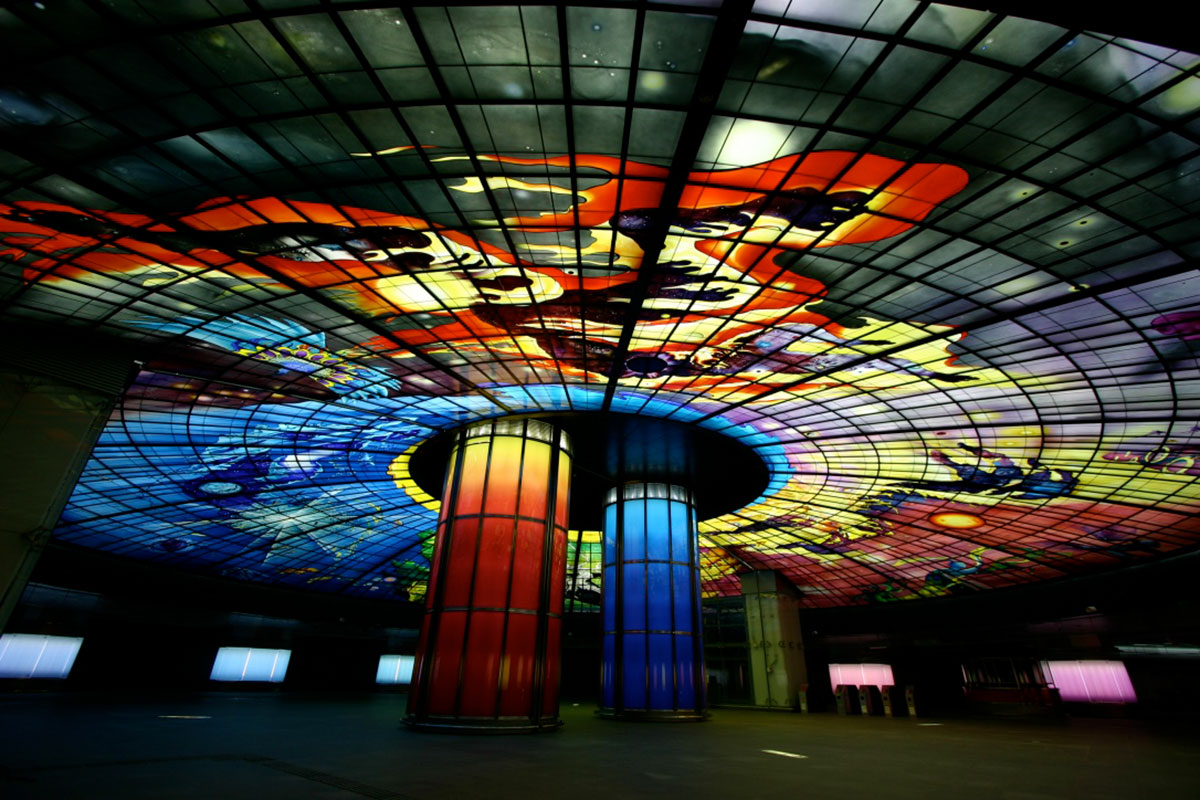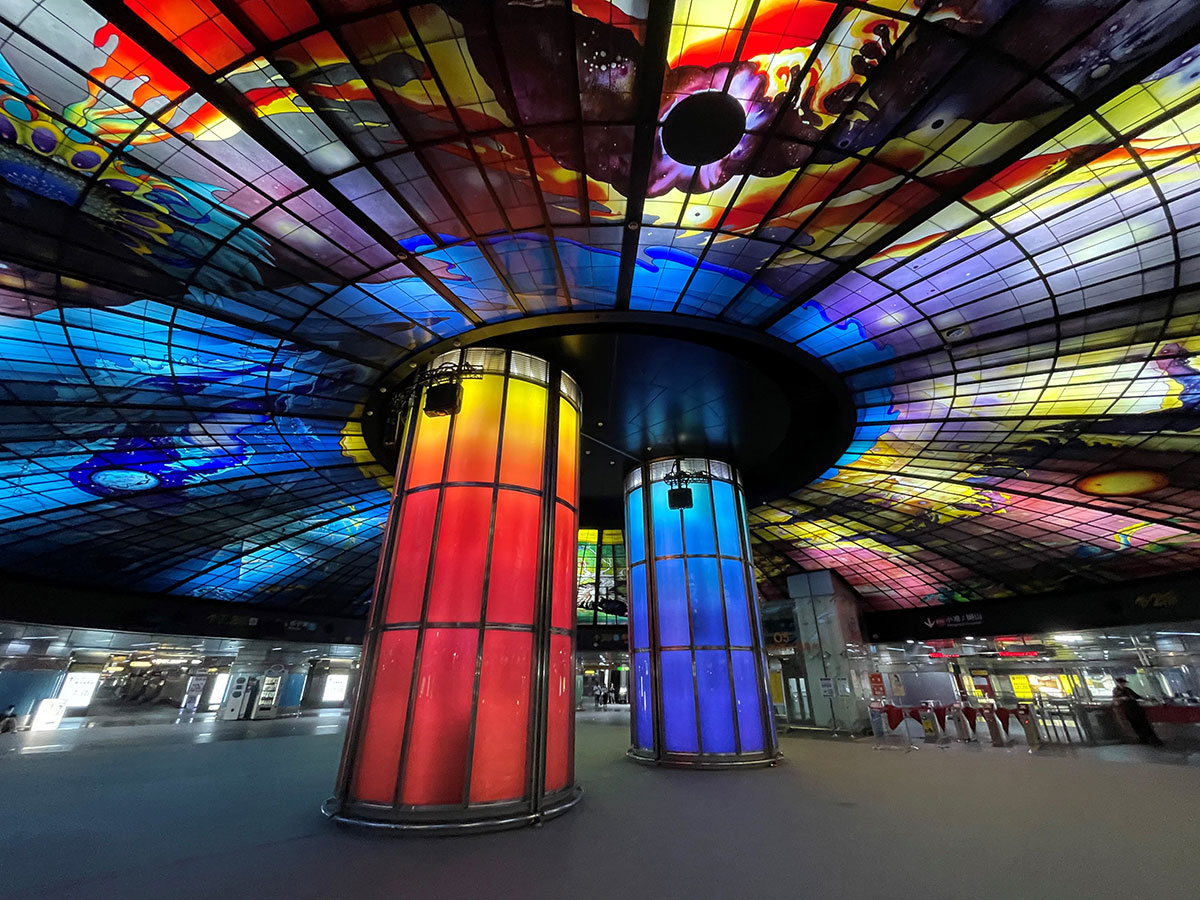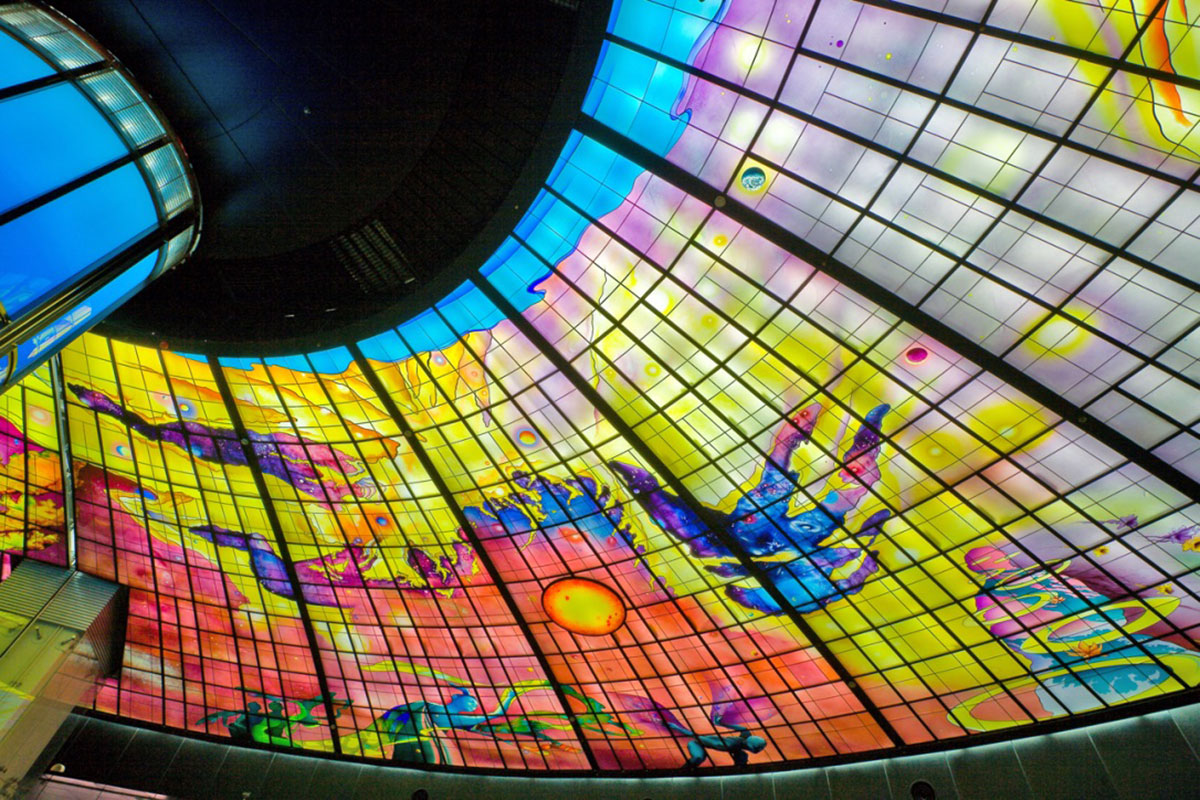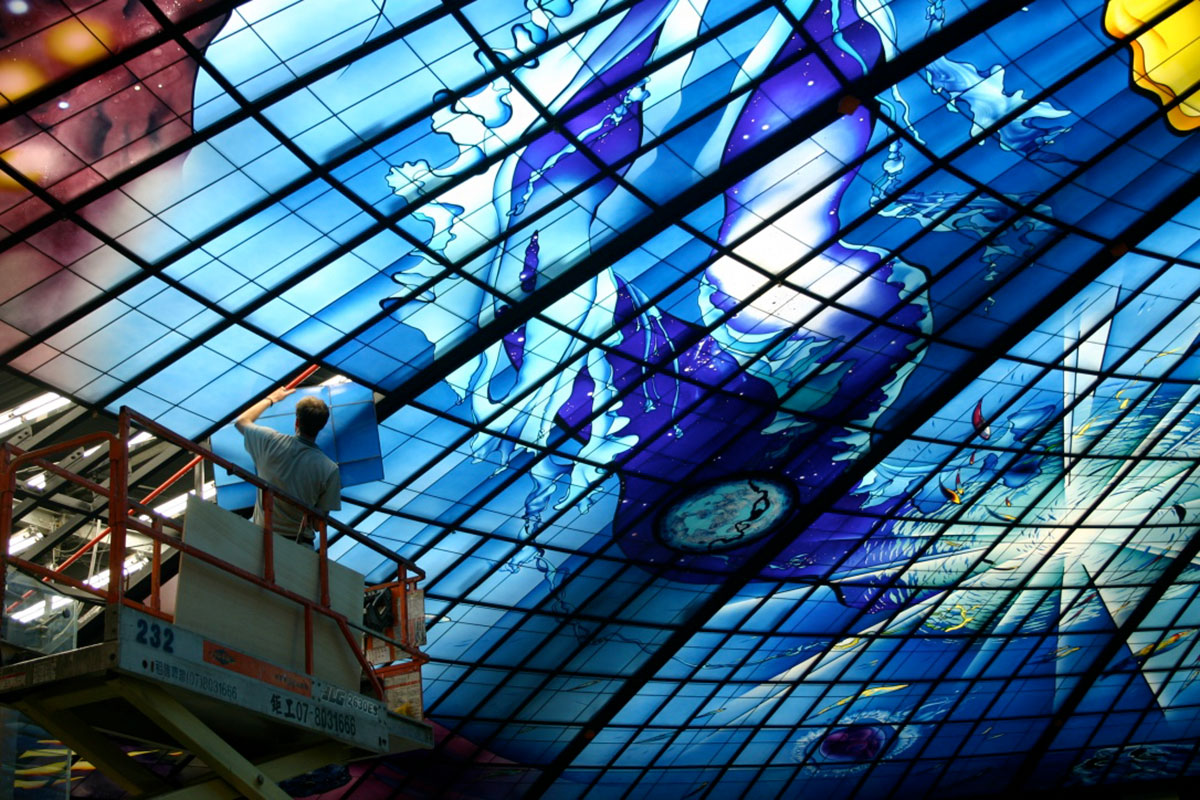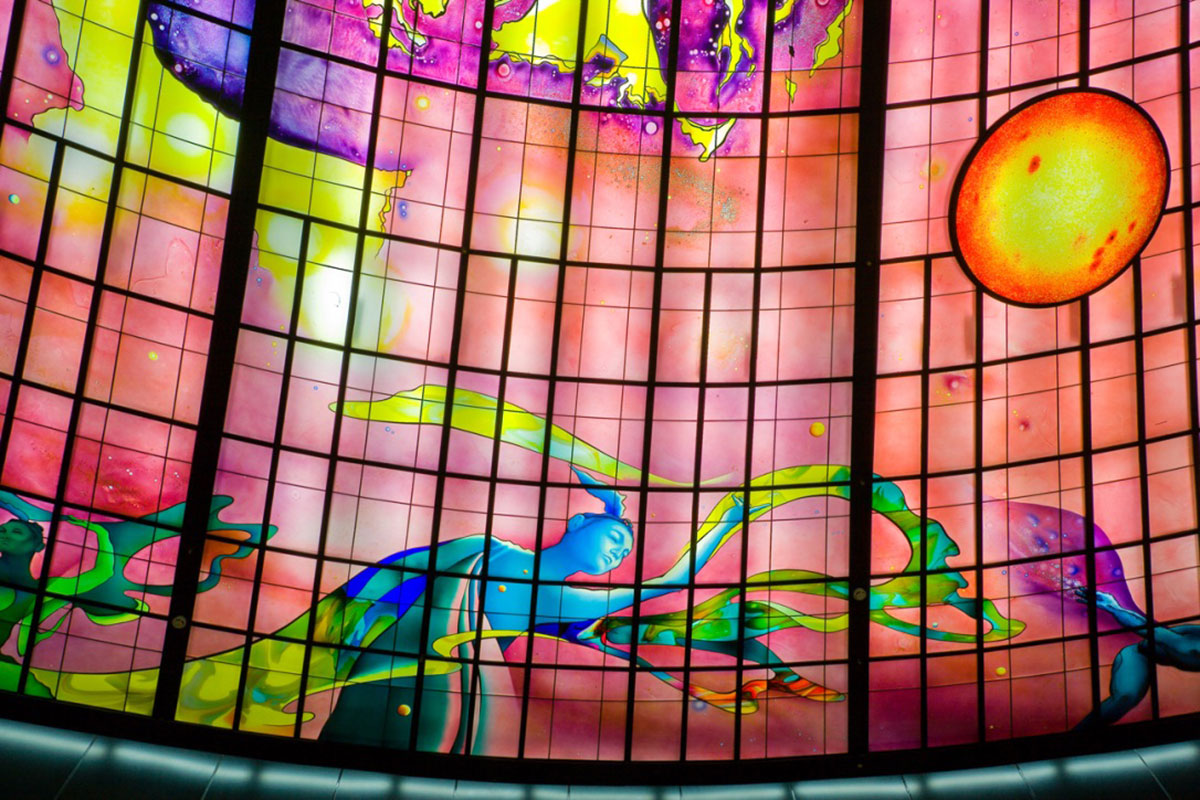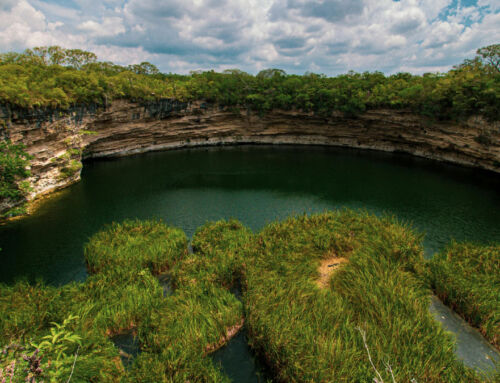“Dome of light: wind, fire and time” is how the Italian Narcissus Quagliata, “a painter, a glass artist, a teacher and a poet”, entitled one of the most prominent works of his production in the art of glass. It is the dome that is the centrepiece of the central pavilion of the Formosa Boulevard station in Kaohsiung, Taiwan; 30 m in diameter, a surface area of 670 m2 and 1,137 individual panels of brightly coloured glass between which levitate figurative and symbolic motifs. As we read, the Dome of Light tells “a rich narrative of the human experience“, in four parts symbolising water, the cradle of life, earth, where it developed, light, symbolising the creative spirit, and fire, or destruction and rebirth. A monument that attracts locals and visitors alike, and has become a tourist destination in its own right. After all, it is the “largest illuminated glass art dome in the world“.
According to the German company Derix Glasstudios, which produced the glass for the Dome of Light, the production of the 1,137 individual glass panels that make up the 16 segments of the dome took “three whole years”. Approximately one third of the dome’s surface is acid-etched blown glass, hand-painted using the technique of areography. The remaining two thirds are made of original fused glass from Murano, Italy. And Derix Glasstudios concludes, “during that time, Narcissus took temporary residence at the studio where he executed large stretches of the painting process himself”.
The truth is that this work for a public space has attracted our attention because of its spectacular nature, and although it had another purpose as a project, the work has ended up on the lists of tourist attractions in the city of Kaohsiung. It appears, for example, in the “Things to do” section of Tripadvisor. This is not Quagliata’s first commission for a public space. Among the most representative of these, in addition to the Dome of Light, are the glass dome of the basilica of Santa Maria degli Angeli e dei Martiri, in Rome, called “Divinity in Light“, or the “Return to the Cosmos” in the lobby of Torre Reforma 115, in Mexico City.
We leave you with a gallery of images for you to enjoy this great work, and we close this little eulogy with a few words from Quagliata himself: “the satisfaction that comes from working on commissioned works, from small to monumental, is that I feel useful (…); the community enjoys the results and their quality of life improves somewhat”, and he concludes, ”every person that walks under my “Dome of Light” in Taiwan, and actively enjoys it, makes me feel that I have not wasted my life“.
Sources: Narcissus Quagliata, Derix Glasstudio, Taiwan.net, Travel King, The Culture Trip, Wikipedia.
Images: Narcissus Quagliata.



